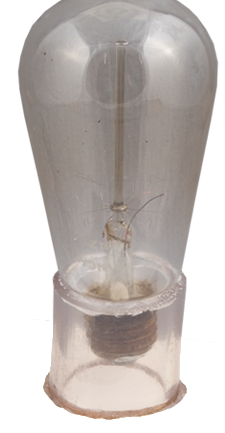
In the early 1880s, iron pyrite or “fool’s gold,” was discovered in the Quantico Creek and led to the opening of the Cabin Branch Pyrite Mine in 1889. At the time, with industry rapidly expanding, the sulfur found in pyrite was important for products such as gunpowder, dyes, glass, and soap.
Most of the mine workers came from the nearby towns of Hickory Ridge and Batestown, Virginia. Others came from Pennsylvania and West Virginia. While some lived in dormitories in the company town, local inhabitants walked through farms and woods to get to the mine. African Americans and whites shared a workplace in an era when whites and blacks could and did not socialize , or be in the same public place..More...
Life for many of the mine workers included the company town. The commissary provided groceries, clothing, and other supplies such as toothbrushes, fishing hooks, barbed wire, and chicken wire – all at inflated prices. Part of workers’ wages came in the form of coupons for the store. While company towns provided laborers with everything they needed in one location, many historians consider them to be paternalistic.
The days were long and the wages were low. Some workers descended over a 1000 feet below ground, into one of the three mineshafts before sunrise and not resurface until after sunset. Estimates place wages between $3.50 -4.25 a day. Children sorted ore for 50 cents a day. This was dangerous work and there were countless injuries and several deaths. The mine gave local residents little more than they already had. Many worked their small subsistence farms after a long day in the mine. In 1920, the workers struck for a 50 cent raise. The owner allegedly responded, “Before I will give you another penny, I will let the mine fill up with water and let the frogs jump in!”
After the mine closed in 1920, its workers returned to local farms or left the area for other mines. The work and the mine closure took a human toll. The mine significantly affected the environment. Vegetation did not grow on much of the former mine site. Quantico Creek was tainted by high acidity and high content of iron and other minerals. Since the 1970s, the National Park Service has worked to restore the mine site to its natural state. The mine shafts were capped in 1995; the National Park Service continues to plant trees and reclaim the site.
|





